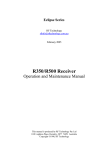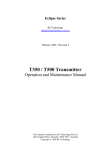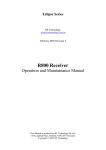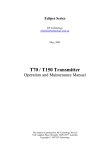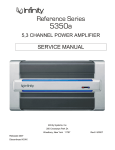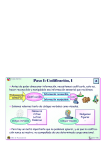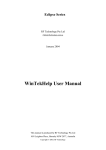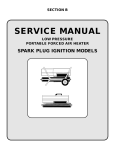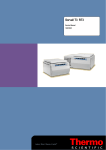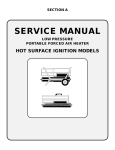Download RF Technology Eclipse Series Operating instructions
Transcript
Eclipse Series RF Technology [email protected] May, 2005 R70/R71 and R150 Receiver Operation and Maintenance Manual This manual is produced by RF Technology Pty Ltd., 10/8 Leighton Place, Hornsby, 2077, Australia Copyright © 1997 RF Technology CONTENTS CONTENTS Contents 1 Operating Instructions 1.1 Front Panel Controls and Indicators 1.1.1 Mon. Volume 1.1.2 Mon. Sq. 1.1.3 N. SQ 1.1.4 C. SQ 1.1.5 Line 1.1.6 PWR LED 1.1.7 SQ LED 1.1.8 Alarm LED 4 4 4 4 5 5 5 5 5 6 2 Receiver Internal Jumper Options 2.1 JP1: 240Hz Notch Filter 2.2 JP2: Audio Response 2.3 JP3: Audio Filter In/Out 2.4 JP4: 600Ω Line dc Loop COS 2.5 JP6: COS Polarity 2.6 JP7/8/9: dc Loop COS Configuration 2.7 JP7, JP8, JP9: Direct Output COS 2.8 JP11 EPROM Type 2.9 JP13: Squelch Defeat (pcb 30/9132/0002 or later) 2.10 JP19: LED Alarm output (pcb 30/9132/0002 or later) 6 6 7 7 7 7 7 8 8 9 9 3 Receiver I/O Connections 3.1 25 Pin Connector 10 10 4 Channel and Tone Frequency Programming 11 5 Circuit Description 5.1 RF Section 5.2 IF Section 5.3 VCO Section 5.4 PLL Section 5.5 Audio Signal Processing 5.6 Noise Filter, Amplifier and Detector 5.7 Subtone Filter and CTCSS 5.8 External Squelch 5.9 Microprocessor Controller 5.10 Carrier Operated Switch 5.11 Voltage Regulator 11 11 11 12 12 13 13 13 14 14 14 15 6 Alignment Procedure 6.1 Standard Input Signal 6.2 RF Alignment 6.3 IF Alignment 6.4 Line Level Adjustment 6.5 Reference Oscillator Calibration 15 15 16 17 17 17 Page 2 RF Technology R350/R500 CONTENTS 7 B CONTENTS Specifications 7.1 General Description 7.1.1 Channel Capacity 7.1.2 CTCSS 7.1.3 Channel Programming 7.1.4 Channel Selection 7.1.5 Micropressor 17 17 17 17 17 18 18 7.2 Physical Configuration 18 7.3 Front Panel Controls, Indicators and Test Points 7.3.1 Controls 7.3.2 Indicators 7.3.3 Test Points 18 18 18 19 7.4 Electrical Specifications 7.4.1 Power Requirements 7.4.2 Frequency Range and Channel Spacing 7.4.3 Frequency Synthesizer Step Size 7.4.4 Frequency Stability 7.4.5 Nominal Antenna Impedance 7.4.6 IF Frequencies 7.4.7 Sensitivity 7.4.8 Selectivity 7.4.9 Spurious and Image Rejection 7.4.10 Inter-modulation 7.4.11 Modulation Acceptance BW 7.4.12 Noise Squelch 7.4.13 Carrier Level Squelch 7.4.14 Receiver Frequency Spread 7.4.15 Receiver Conducted Spurious Emissions 7.4.16 Audio Frequency Response 7.4.17 Audio Output Level 7.4.18 Audio Distortion 7.4.19 Channel Select Input/Output 7.4.20 Carrier Operated Switch Output 7.4.21 CTCSS 7.4.22 External Squelch Input 19 19 19 19 19 19 20 20 20 20 20 20 20 21 21 21 21 21 21 22 22 22 24 7.5 Connectors 7.5.1 Antenna Connector 7.5.2 Power and I/O Connector 7.5.3 Test Connector 24 24 24 24 Parts List RF Technology R70/R71 and R150 27 Page 3 1 OPERATING INSTRUCTIONS WARNING Changes or modifications not expressly approved by RF Technology could void your authority to operate this equipment. Specifications may vary from those given in this document in accordance with requirements of local authorities. RF Technology equipment is subject to continual improvement and RF Technology reserves the right to change performance and specification without further notice. 1 Operating Instructions 1.1 Front Panel Controls and Indicators 1.1.1 Mon. Volume The Mon. Volume control is used to adjust the volume of the internal loudspeaker and any external speaker connected to the test socket. It does not effect the level of the 600Ω line or direct audio output. 1.1.2 Mon. SQ. The Mon. SQ. switch allows all squelch functions controlling the monitor output to be disabled. When the switch is in the Mon. SQ. position the audio at the monitor speaker is controlled by the noise detector. The CTCSS, carrier and external squelch functions are disabled. This can be useful when you are trying to trace the source of on-channel interference or when setting the noise squelch threshold. The audio from the 600Ω line and direct outputs is not effected by the switch position. 1.1.3 N.SQ The N.SQ trimpot is used to set the noise squelch sensitivity. procedure to set the noise squelch to maximum sensitivity. 1. Use the following Set the toggle switch to the Mon. Sq. position and set the Mon. Volume control to 9 o’clock. Page 4 RF Technology R350/R500 1.1 OPERATING INSTRUCTIONS 1.1 Front Panel Controls and Indicators 2. Turn the N. SQ. adjustment counter clockwise until the squelch opens and noise is heard from the speaker. Adjust the VOLUME to a comfortable listening level. 3. In the absence of any on channel signal, turn the N.SQ. screw clockwise until the noise in the speaker is muted. Then turn the screw two additional turns in the clockwise direction. 1.1.4 C.SQ The C.SQ trimpot is used to set the carrier squelch sensitivity. Carrier squelch is useful at higher signal levels than those at which noise squelch and can be used typically from 1-200µ V input. It is provided mainly for use in fixed link applications where a high minimum signal to noise ratio is required or where very fast squelch operation is required for data transmission. The carrier squelch will open and close in less than 2 mSec. In most base station applications carrier squelch is disabled by turning the adjustment counter clockwise until the screw clicks. The carrier squelch may be set to a predetermined level with the Techelp/Service Monitor 2000 software or by using the following procedure: 1. First turn the adjustment fully counter-clockwise. squelch as above. 2. Connect a source of an on channel signal with the desired threshold level to the receiver's RF input. 3. Turn the screw clockwise until the SQ LED goes OFF. Then turn the screw back until the LED just comes ON. 1.1.5 Then set the noise LINE The LINE trimpot is used to set the line and direct audio output level. It is normally set to give 0dBm (775mV) to line with a standard input signal equal to 60% of maximum deviation at 1 KHz. The level can be measured between test socket pins 6 and 1 and set as desired. 1.1.6 PWR LED The PWR LED shows that the dc supply is connected to the receiver. 1.1.7 SQ LED The SQ LED comes on when the audio to the line and direct outputs is un-squelched. RF Technology R70/R71 and R150 Page 5 2 RECEIVER INTERNAL JUMPER OPTIONS The LED and squelch function are controlled by noise, carrier and tone squelch circuits. 1.1.8 ALARM LED The ALARM LED can indicate the detection of several different fault conditions by the self test circuits. The alarm indicator shows the highest priority fault present. Receivers using software issue 5 and higher use the cadence of the LED flash sequence to indicate the alarm condition. Refer to table 1. LED Flash Cadence 5 flashes, pause 4 flashes, pause 3 flashes, pause 1 flash, pause LED ON continuously Fault Condition Synthesizer unlocked Tuning voltage outside limits Signal level below preset threshold (fixed link) dc supply voltage low or high External squelch is active Table 1: Interpretations of LED flash cadence Receivers using software issue 4 and lower use the LED flash rate to indicate the alarm condition. Refer to table 2. Indication Flashing, 8 per second Flashing, 4 per second Flashing, 2 per second Continuous Fault condition Synthesizer unlocked Tuning voltage outside 2-7 Vdc Signal level below preset threshold (fixed links) dc supply voltage low or high Table 2: Interpretations of LED flash speed, for early models. 2 Receiver Internal Jumper Options In the following subsections an asterisk (*) signifies the standard (Ex-Factory) configuration of a jumper. 2.1 JP1: 240 Hz Notch Filter JP1 allows the 240Hz notch filter in the normal audio path to be bypassed. Condition Notch Filter In Notch Filter Out Page 6 Position 1-2 * 2-3 RF Technology R350/R500 2.2 2.2 JP2: Audio Response Condition 750 uSec. de-emphasis Flat response 2.3 2 RECEIVER INTERNAL JUMPER OPTIONS JP2: Audio Response Position 1-2 * 2-3 JP3: Audio Filter In/Out JP3 bypasses the 300Hz high-pass filter and 240Hz notch filter if necessary. Condition Hi-pass, Notch In Flat response 2.4 Position 2-3 * 1-2 JP4: 600Ω Line dc Loop COS JP4 allows the dc return path through the output audio transformer to be broken, to permit dc signaling via the audio pair or wires. Condition dc Loop Configured by JP7, JP8, JP9 dc Loop Not used 2.5 JP6: COS Polarity Condition Active on Signal Active on No Signal 2.6 Position 1-2 * 2-3 Position 2-3 * 1-2 JP7,JP8,JP9: dc Loop COS Configuration (JP4 1-2) These settings are relevant when the Carrier Operated Switch (COS) signal is to be used across the same wires as the audio. Refer to setting of JP4, in section 2.4. They control the levels and connection into the audio balanced line circuitry. Condition Source +12 Vdc Loop Free Switch Output JP7 2-3 1-2 RF Technology R70/R71 and R150 JP8 ON ON JP9 1-2 * 2-3 Page 7 2 RECEIVER INTERNAL JUMPER OPTIONS 2.7 2.7 JP7/8/9 Direct Output COS JP7, JP8, JP9: Direct Output COS (JP4 2-3) In this arrangement, the COS signal is taken via the separate COS+ and COSoutputs, either with free (floating) output or with +12Vdc pull-up. Condition +12 Vdc Direct Output Free Switch Output 2.8 JP7 2-3 1-2 JP8 OFF OFF JP9 OFF OFF JP11 EPROM Type Condition 27C256 27C64 2.9 Position 2-3 * 1-2 JP13: Squelch Defeat (pcb 30/9132/0002 or later) Normal squelch can be defeated with an active low signal at DB-25 pin 19. Condition Squelch operation normal Squelch Defeat 2.10 Position 1-2 * 2-3 JP19: LED Alarm o/p (pcb 30/9132/0002 or later) The LED alarm can be brought out to DB-25 pin 7 for ATI Condition No Alarm Output Alarm LED connect to DB-25 pin 7 Page 8 Position 1-2 * 2-3 RF Technology R350/R500 RECEIVER INTERNAL JUMPER OPTIONS 2 RX PCB TX PCB The Receiver and Transmitter modules plug into the back plane DB25/F connectors Miniature spade connectors (2.1 x 0.6 x 7mm) are captive/ soldered at the labelled points. To configure: Solder wire connections between appropriate points. Receiver DB25/F RX PCB DESCRIPTION TX PCB Transmitter DB25/F 1, 14 +12V +12V DC SUPPLY +12V 1, 14 2 TXD TX Data TXD 2 15 RXD RX Data RXD 15 3 COR+ Carrier Operate Sw+ PressToTalk input PTT 3 16 COR- Carrier Operate Sw- Tx/Rx output T/R 16 4 TONE Subtone output Hi Z audio input+ AUD+ 4 17 AUDIO Audio output Hi Z audio input- AUD- 17 5 AGND Audio Ground Ext tone input+ TONE+ 5 18 DISC Discriminator output Ext tone input- TONE- 18 6 LINE+ Line output+ Line input+ LINE+ 6 20 LINE- Line output- Line input- LINE- 20 ALC 8 8 EXT SQ Ext Squelch input Auto Level Control 13, 25 GND Ground, 0V GND 13, 25 21 BCD 1 Channel select 1’s digit BCD 1 21 9 BCD 2 Channel select 1’s digit BCD 2 9 22 BCD 4 Channel select 1’s digit BCD 4 22 10 BCD 8 Channel select 1’s digit BCD 8 10 23 BCD 10 Channel select 10’s digit BCD 10 23 11 BCD 20 Channel select 10’s digit BCD 20 11 24 BCD 40 Channel select 10’s digit BCD 40 24 12 BCD 80 Channel select 10’s digit BCD 80 12 RF Technology R70/R71 and R150 Page 9 3 RECEIVER I/O CONNECTIONS 3.1 25 Pin Connector 3 Receiver I/O Connections 3.1 25 Pin Connector The D-shell 25 pin connector is the main interface to the receiver. The pin connections are described in table 3. Function DC Power Channel Select RS232 Data 600Ω Line Signal +12 Vdc 0 Vdc 1 2 4 8 10 20 40 80 In Out In Out 150Ω / Hybrid Discriminator Direct Audio Output Audio Ground Sub-Audible Audio Out Carrier Operated Sw Carrier Operated Sw External Squelch COS [+] COS [-] Input Pins 1, 14 13, 25 21 9 22 10 23 11 24 12 15 2 20 6 7 19 18 17 5 4 Specification +11.4 to 16 Vdc Ground BCD Coded 0 = Open Circuit or 0 Vdc 3 16 8 Opto-coupled Transistor Switch (10mA 30V max) <1 Vdc to Squelch >2 Vdc or open ckt to unsquelch 1 = +5 to +16 Vdc Test and Programming use 9600, 8 data 2 stop bits Transformer Isolated Balanced 0dBm Output AC coupled, unsquelched Direct AC Coupled Audio Direct Audio Ground Unsquelched, 1-250 Hz Table 3: Pin connections and explanations for the main, 25-pin, D-shell Connector Page 10 RF Technology R350/R500 4 FREQUENCY PROGRAMMING 4 Frequency Programming Channel and tone frequency programming is most easily acomplished with RF Technology TecHelp/Service Monitor 2000 software. This software can be run on an IBMcompatible/Windows PC and provides a number of additional useful facillities. TecHelp/Service Monitor 2000 allows setting of the adaptive noise squelch threshold, provides a simple means of calibrating the signal strength output and minimum signal alarm. TecHelp/Service Monitor 2000 can be supplied by your dealer, distributor or by contacting RF Technology direct. 5 Circuit Description The following descriptions should be read as an aid to understanding the block and schematic diagrams at the rear of this manual. 5.1 RF Section A two pole voltage tuned filter (D13, D14, L35-39) is used to limit the RF band width prior to the RF amplifier transistor Q1. The tuning voltage is supplied by the frequency synthesizer through voltage follower U28D. The circuit values are chosen so that the centre frequency tracks the VCO frequency. RF amplifier transistor Q1 is followed by a second two pole voltage tuned filter (D15, D16, L28-32) which provides additional image and spurious frequency rejection. The filter output is connected to the RF input port of the mixer MX1. MX1 is a high level double balanced diode ring mixer with excellent intermodulation performance. It has a conversion loss of approximately 6 dB. The gain between the receiver input and the mixer input is approximately 10 dB so that the total gain between the antenna input and the IF input 3-4dB. Monolithic amplifiers MA1, MA2 and transistor Q5 amplify the VCO output to the necessary LO level for MX1 approximately +13dBm. The network C8, C9 L1-3 and R6 passes the IF frequency of 45 MHz and terminates the RF and LO components. 5.2 IF Section The first IF amplifier uses two parallel connected JFET transistors Q2 and Q3 to obtain 8-10 dB gain. The two transistors provide improved dynamic range and input matching over a single transistor. RF Technology R70/R71 and R150 Page 11 5 CIRCUIT DESCRIPTION 5.2 IF Section A two pole 45 MHz crystal filter XF1 is used between the first and second IF amplifiers. The second IF amplifier Q4 provides additional gain of 6-10dB. A two pole crystal filter is used between Q4 and the 2nd oscillator mixer. These two crystal filters provide some adjacent channel rejection and all of the second IF image frequency rejection. U1 is a monolithic oscillator and mixer IC. It converts the 45 MHz IF signal down to 455 KHz. The second oscillator frequency or 45.455 MHz is controlled by crystal Y1. The 455 KHz output of the second mixer is fed through a ceramic filter CF1 to the second IF amplifier transistor Q27. Q27 provides an additional 15 dB gain ahead of the limiter and discriminator IC U3. CF1 provides additional adjacent channel selectivity for 25KHz versions and all of the adjacent channel selectivity for 12.5 KHz versions. CF1 and termination resistors R15 and R24 are the only component differences between the 12.5 and 25 KHz versions The limiter/discriminator IC U3 further amplifies the signal and passes it through CF2. CF2 does not contribute to the adjacent channel rejection but is used to reduce the wide band noise input to the limiter section of U3. The limiter section of U3 drives the quadrature detector discriminator. C31 and IF tuned circuit L10 comprise the discriminator phase shift network. U3 also has a received signal strength indicator output (RSSI). The RSSI voltage connects to the test socket for alignment use. The RSSI voltage is also used by the microprocessor for the adaptive noise squelch, carrier squelch and low signal alarm functions. Dual op-amp U2 is used to amplify and buffer the discriminator audio and RSSI outputs. 5.3 VCO Section The Voltage Controlled Oscillator uses a junction FET Q6 which oscillates at the required mixer injection frequency. Varactor diode D4 is used by the PLL circuit to keep the oscillator on the desired frequency. Transistor Q7 is used as a filter to reduce the noise on the oscillator supply voltage. 5.4 PLL Section The synthesizer frequency reference is supplied by either a conventional crystal oscillator (Q25, Y4) or a temperature compensated crystal oscillator (XO1). The frequency stability of the conventional oscillator is 5 ppm and the temperature compensated oscillator is better than 1 ppm. The 12.8 MHz output of Q25 or XO1 is amplified by Q8 to drive the reference input of the PLL synthesizer IC U4. This IC is a single chip synthesizer which includes a Page 12 RF Technology R350/R500 5.5 Audio Signal Processing 5 CIRCUIT DESCRIPTION 1.1 GHz pre-scaler, programmable divider, reference divider and phase/frequency detector. The frequency data is entered by a serial data link from the microprocessor. The phase detector output signals of U4 are used to control two switched current sources. The output of the positive and negative sources' Q10 and Q16, produce the tuning voltage which is smoothed by the loop filter components to bias the VCO varactor diode D4. 5.5 Audio Signal Processing A 4 KHz low pass filter (U27b) is used to remove high frequency noise from the signal. A 300 Hz high pass filter (U26a,b) then removes the sub-audible tones. A 240 Hz notch filter (U26c,d) is used to improve the rejection of tones above 200 Hz. The high pass and notch filters can be bypassed by internal jumpers JP1 and JP3. The audio frequent response can be set for either 750 uS de-emphasis or a flat characteristic by JP2. JP2 selects the feedback network of amplifier U27c. After de-emphasis and filtering, the audio signal is applied to the inputs of two analog switches (U17a,b). These switches are controlled by the micro-controller and squelch or mute the audio to the line and monitor output circuits. The monitor output can be set for noise squelch only operation by S1. The audio from U17a is adjusted by the volume control before connecting to the monitor output amplifier U5. U5 drives the internal speaker and can also supply 3-5 watts to an external loudspeaker. The audio from U17b is adjusted by RV3 before connecting to the line output IC (U22a,b). U22 is a dual amplifier connected in a bridge configuration to drive the 600Ω line output transformer T1. 5.6 Noise Filter, Amplifier and Detector The unfiltered audio from the discriminator is fed to trimpot RV4 which is used to set the noise squelch threshold. From RV4 the audio goes to the noise filter (U27a). This is a 10 KHz high pass filter and is used to eliminate voice frequency components. The noise signal is then amplified by U27d and fed to the noise detector. The noise detector consists of D6, Q17 and U26c. D6 and Q17 are a charge pump detector and pull the input to U26c low as the noise increases. U26c has positive feedback and acts like a schmidt trigger. The output of U26c goes high when noise is detected. It connects to the micro-controller and to analog switch U17d. U17d varies the gain of the noise amplifier to provide approximately 2dB hysteressis. 5.7 Sub-Tone Filter and CTCSS The discriminator audio is fed through cascaded low pass filters U28a and U28b to filter out the voice frequency components. The filtered sub-tone audio is supplied to the CTCSS hybrid and the rear panel RF Technology R70/R71 and R150 Page 13 5 CIRCUIT DESCRIPTION 5.8 External Squelch system connector. The filtered output can be used for re-transmission of CTCSS or DCS. The CTCSS decoder module is a micro-controller base hybrid module. Under control of the main microprocessor U15 it can decode all 38 EIA tones and 12 additional commonly used tones. The decode bandwidth is set to 1% but may be changed to 2% by a jumper on the printed circuit board. 5.8 External Squelch The audio output can be muted through pin 8 of the receiver system connector P1. When pin 8 is pulled to less than 1 volt above ground, the micro-controller U15 will mute the audio output. This facility can be used to mute the audio during transmission, as is required in single frequency systems, by simply connecting pin 8 of the receiver to the transmitter T/R relay driver output (pin 16 on Eclipse transmitters). 5.9 Microprocessor Controller The microprocessor controller circuit uses an advanced eight bit processor and several support chips. The processor U15 includes EE memory for channel frequencies, tones, and other information. It also has an asynchronous serial port and an analog to digital converter. The program is stored in U12, a CMOS EPROM. U13 is an address latch for the low order address bits. U11 is used to read the channel select lines onto the data bus. U7 is an address decoder for U11 and U12. U14 is a supervisory chip which keeps the processor reset unless the +5 Volt supply is within operating limits. U16 translates the asynchronous serial port data to standard RS232 levels. The analog to digital converter is used to measure the received signal strength, tuning voltage, dc supply voltage and the carrier squelch setting. 5.10 Carrier Operated Switch The carrier operated switch is an opto-coupled (ISO1) output. Internal jumpers (JP4,7,8,9) can be connected to provide loop source, loop switch, free switch and various other configurations. The COS can be set to be active (switch closed) on carrier or active in the absence of carrier. The generic term ``Carrier Operated Switch'' may be misleading in this case. SINCE, if a sub-audible tone has been programmed for the channel in use, the COS is controlled by carrier and tone detection. Page 14 RF Technology R350/R500 5.11 Voltage Regulator 5.11 5 CIRCUIT DESCRIPTION Voltage Regulator The dc input voltage is regulated down to 9.4 Vdc by a discrete regulator circuit. The series pass transistor Q20 is driven by error amplifiers Q21 and Q22. Q23 is used to start up the regulator and once the circuit turns on, it plays no further part in the operation. This circuit is short circuit and overload protected. It provides much better line isolation and lower dropout voltage than can be obtained with current integrated circuit regulators. 6 Alignment Procedure The following procedures may be used to align the receiver for optimum performance. Normally only RF alignment will be required when changing frequencies. IF alignment should only be necessary after repairs on that part of the circuit. Reference oscillator or TCXO calibration may be required periodically due to crystal aging. The aging should be less than 1 ppm/year. 6.1 Standard Input Signal RF Signal Generator 50Ω output impedance Frequency range 66 - 174 MHz FM modulation at 1KHz 1.5KHz peak for 12.5KHz channel spacing 3.0KHz peak for 25KHz channel spacing. 6.2 RF Alignment Alignment Frequency 66-84 MHz range 76.000 MHz 70-88 MHz range 80.000 MHz 136-156 MHz range 146.000 MHz 148-168 MHz range 158.000 MHz 154-174 MHz range 164.000 MHz RF Technology R70/R71 and R150 Page 15 6 ALIGNMENT PROCEDURE Step 1 2 3 6.3 Step 1 2 3 4 5 6 7 Page 16 Input Select alignment frequency channel Signal generator on centre frequency channel to J1. Modulation off. As Above 6.3 IF Alignment Measure dc Volts on test socket pin 9 to pin 1 dc Volts on test socket pin 7 to pin 1 Adjust L34 to read 4.00Vdc As Above L29, L31, L36, L38 for maximum reading. Reduce generator output to keep below 2 Vdc Input Signal generator on center frequency channel to J1. Modulation OFF As Above Measure dc Volts in test socket pin 7 to pin 1 Adjust Generator level to read 1 - 2 Vdc As Above Set generator level to 10 µV Set generator level to 1 millivolt. Modulation ON. As Above As Above Frequency U3 pin 9 L5, L6, L7, L8 for maximum reading. Reduce generator output to keep below 2 Vdc L9 to read 455 KHz +/- 10Hz Line level (RV3) to obtain approx.1Vrms Generator level to read 1 - 2 Vdc IF Alignment Set generator level to approx. 25µV Audio level test socket pin 6 to pin 1 As Above Audio level P1 pin 18 to pin 5 SINAD on test socket pin 6 to pin 1 L10 for maximum RV1 for 0.5 Vrms Reduce generator level to obtain 12 Db SINAD. Carefully adjust L5, L6, L7, L8 to obtain the best SINAD. Reduce generator output to maintain 12 dB SINAD RF Technology R350/R500 6.4 Step 1 6.5 Step 1 Line Level Adjustment Input Signal generator on centre frequency channel to J1. Modulation ON. Level 1 millivolt Measure Audio level test socket pin 6 to pin 1 Adjust RV3 for 390 mV rms Reference Oscillator Calibration Input None required Measure Frequency junction of R69 and R26 on the top of the PCB. (LO input to the mixer) 7 Specifications 7.1 General Description Adjust C181 or XO1 for L.O. +/-100 Hz L.O. = Fc+45 MHz The receiver is a high performance, frequency synthesized, narrow band FM unit which can be used in conjunction with transmitter and power supply modules as a base station or as a stand alone receiver. All necessary control and 600Ω line interface circuitry is included. 7.1.1 Channel Capacity Although most applications are single channel, it can be programmed for up to 100 channels numbered 0-99. This is to provide the capability of programming all channels into all of the receivers used at a given site. 7.1.2 CTCSS The CTCSS tone or no tone can also be programmed for each channel. So that each channel number can represent unique RF and tone frequency combination. 7.1.3 Channel Programming The channel information is stored in a non-volatile memory chip and can be programmed via the front panel test connector using a PC and RF Technology supplied TecHelp/Service Monitor 2000 software. RF Technology R70/R71 and R150 Page 17 7 SPECIFICATIONS 7.1.4 7.1.4 Channel Selection Channel Selection Channel selection is by eight channel select lines. These are available through the rear panel connector. A BCD active high code applied to the lines selects the required channel. This can be supplied by pre-wiring the rack connector so that each rack position is dedicated to a fixed channel. BCD switches inside the receiver can be used to pre-set any desired channel. These eliminate the need to externally select the channel. 7.1.5 Microprocessor A microprocessor is used to control the synthesizer and squelch functions and facilitate the channel frequency programming. With the standard software it also can provide fault monitoring and reporting. 7.2 Physical Configuration The receiver is designed to fit in a 19 inch rack mounted frame. The installed height is 4 RU (178 mm) and the depth 350 mm. The receiver is 63.5 mm or two Eclipse modules wide. 7.3 Front Panel Controls, Indicators and Test Points 7.3.1 Controls Mute defeat switch - toggle (Overrides CTCSS, noise and carrier squelch at the monitor output) Monitor Speaker Volume - Knob Line Output Level - screwdriver adjust multiturn pot Noise Squelch Setting - screwdriver adjust multiturn pot Carrier Squelch Setting - screwdriver adjust multiturn pot 7.3.2 Indicators Power ON - Green LED Squelch Open - Yellow LED Fault Indicator - Flashing Red LED Page 18 RF Technology R350/R500 7 SPECIFICATIONS 7.3.3 Test Points 7.3.3 Test Points (DB9 Connector) Line Output Level Pin 6 + Gnd (pin 1) Receive Signal Strength Pin 7 + Gnd (pin 1) Tuning Voltage Pin 9 + Gnd (pin 1) Serial Data (RS232) Pins 2/3 + Gnd (pin 1) 7.4 Electrical Specifications 7.4.1 Power Requirements Operating Voltage - 10.5 to 16 Vdc Current Drain - 250mA Max. Polarity - Negative Ground 7.4.2 Frequency Range and Channel Spacing Frequency 66 - 84 MHz 70 - 88 MHz 136 - 156 MHz 148 - 168 MHz 154 - 174 MHz 7.4.3 25 KHz R70A/R71A R70A/R71A R150A R150B R150B 12.5 KHz R70AN/R71AN R70AN/R71AN R150AN R150BN R150BN Frequency Synthesizer Step Size 5.0 or 6.25 KHz 7.4.4 Frequency Stability +/- 5 ppm, 0 to +60 C, Standard for 25 KHz +/- 1 ppm, 0 to +60 C, Standard for 12.5 KHz, Optional for 25 KHz 7.4.5 Nominal Antenna Impedance 50Ω RF Technology R70/R71 and R150 Page 19 7 SPECIFICATIONS 7.4.6 7.4.6 IF Frequencies IF Frequencies First IF frequency 45 MHz Second IF frequency 455 KHz 7.4.7 Sensitivity -119 dBm Max. for 12 dB SINAD -116 dBm Max. for 20 dB Quieting 7.4.8 Selectivity 25 KHz spacing - 80dB per RS204C 12 KHz spacing - 70dB per ECR-235 7.4.9 Spurious and Image Rejection 90dB 7.4.10 Inter-modulation 80dB 7.4.11 Modulation Acceptance BW 25 KHz spacing - 7.5 KHz per RS204C 12.5 KHz spacing - 3.75 KHz per RS204C 7.4.12 Noise Squelch Adjustment Range: 6 - 26dB SINAD, 25KHz versions 6 - 18 dB SINAD, 12.5 KHz versions Attack Time: 20 mSec. above 20dB Quieting Release Time: 150 mSec. at 20dB Quieting decreasing to 20ms above 2µV preset threshold Hysteresis: Hysteresis is equal to approximately 2dB change in noise quieting Page 20 RF Technology R350/R500 7.4.13 Carrier Level Squelch 7.4.13 7 SPECIFICATIONS Carrier Level Squelch Carrier level squelch can be used when it is necessary to set the opening point above 26dB SINAD as may be required in link applications. The minimum adjustment range is 1 to 200µV. 7.4.14 Receiver Frequency Spread Less than 1 dB change in sensitivity over the band 7.4.15 Receiver Conducted Spurious Emissions Less than -57dBm from 1 to 2900 MHz 7.4.16 Audio Frequency Response 600ΩLine and Direct Output: +1/-3dB 300-3000 Hz relative to either a flat response or 750µs de-emphasis with the high pass and notch filters bypassed. +1/-6 dB with the filters in circuit. Sub-Audio Output: +1/-3dB 67-250 Hz 7.4.17 Audio Output Level 600ΩLine: Adjustable -10 to +10dBm Monitor Loudspeaker: 5 Watts with external speaker, 0.3 Watt with internal speaker Discriminator and Sub-Audio: Nominally equal to 1 volt peak at rated system deviation 7.4.18 Audio Distortion 750µs De-Emphasis: Less than 3% at 1 KHz and 60% of rated system deviation Flat Response: Less than 5% at 1 KHz and 60% of rated system deviation RF Technology R70/R71 and R150 Page 21 7 SPECIFICATIONS 7.4.19 7.4.20 Carrier Operated Switch Output Channel Select Input/Output Coding: 8 lines BCD coded 00-99 Logic Input Levels: 0 = <0.4 Volts 1 = >3.5 Volts Internal 10K pull down resistors selects Channel 00 when all inputs are O/C. 7.4.20 Carrier Operated Switch Output Floating Opto-Coupler Output: The carrier operated switch output is via an opto-coupler. Collector and emitter connections are available to allow connection for source or sink. The opto-coupler can be linked inside the receiver to be ON when a carrier is detected or to be ON in the absence of carrier. Connection to Remote Switch via 600Ω Line: Internal connections are provided so that the opto-coupler can be connected to the 600Ω line for use over a single pair. This permits remote switching with no extra connections. Current Source/Sink, Collector Voltage: The COS output is implemented with an optocoupler whose ratings are: Ic = 10mA Vc = 30 Volts 7.4.21 or 20mA Maximum 15 V Maximum CTCSS The CTCSS decoding is provided by a hybrid module. This provides programmable decoding of all 38 EIA and 12 other common tones. Refer to table 4. Page 22 RF Technology R350/R500 7 SPECIFICATIONS 7.4.21 CTCSS Frequency No Tone EIA Number 67.0 69.4 71.9 74.4 77.0 79.7 82.5 85.4 88.5 91.5 94.8 97.4 100.0 103.5 107.2 110.9 114.8 118.8 123.0 127.3 131.8 136.5 141.3 146.2 151.4 156.7 159.8 162.2 165.5 167.9 171.3 173.8 177.3 179.9 183.5 186.2 189.9 192.8 196.6 199.5 203.5 206.5 210.7 218.1 225.7 229.1 233.6 241.8 250.3 254.1 A1 B1 C1 A2 C2 B2 C3 A3 C4 B3 A4 B4 A5 B5 A6 B6 A7 B7 A8 B8 A9 B9 A10 B10 A11 B11 A12 B12 A13 B13 A14 B14 A15 B15 A16 B16 A17 Table 4: Tone Squelch Frequencies RF Technology R70/R71 and R150 Page 23 7 SPECIFICATIONS 7.4.22 7.4.22 External Squelch Input External Squelch Input An external input is provided to squelch or mute the receiver audio output. This may be used in conjunction with an external decoder or to mute the receiver during transmissions. External Squelch Input can be connected to the T/R Relay pin on Eclipse transmitters to mute the receiver during transmission. 7.5 Connectors 7.5.1 Antenna Connector Type N Female Mounted on the module rear panel 7.5.2 Power & I/O Connector 25-pin “D” Male Mounted on the rear panel 7.5.3 Test Connector 9-pin “D” Female mounted on the front panel Page 24 RF Technology R350/R500 IN OUT +12 Vdc Direct Output Free Switch Output JP7, JP8, JP9 - Direct Output COS (JP4 2-3) Source +l2Vdc Loop Free Switch Output JP7, JP8, JP9 - dc Loop COS Configuration (JP4 1-2) Active on Signal Active on No Signal JP6 - COS Polarity dc Loop Configured by JP7, JP8, JP9 dc Loop Not Used JP4 - 600 Ohm Line dc Loop COS Hi-pass & Notch In Flat Response JP3 - Audio Filter in/Out 750 uSec. de-emphasis Flat response JP2 - Audio Response Notch Filter JP1 - 240 Hz Notch Filter JP7 2-3 1-2 JP7 2-3 1-2 RECEIVER Jumper Options JP8 OFF OFF JP8 ON ON Position 2-3 * 1-2 1-2 * 2-3 Position Position 2-3 * 1-2 Position 1-2 * 2-3 Position 1-2 * 2-3 JP9 OFF OFF JP9 1-2 * 2-3 * = Standard Factory Configuration No alarm output Alarm LED signal output brought to DB25 pin 7 JP19 – LED Alarm output Squelch operation normal Squelch Defeat on active low input at DB25 pin 19 JP13 – Squelch Defeat THE FOLLOWING JUMPERS ARE VALID ON RX PCB VERSION 30/9132/0002 OR LATER 27C256 27C64 JP11 EPROM Type Position 1-2 * 2-3 Position 1-2 * 2-3 Position 2-3 * 1-2



























